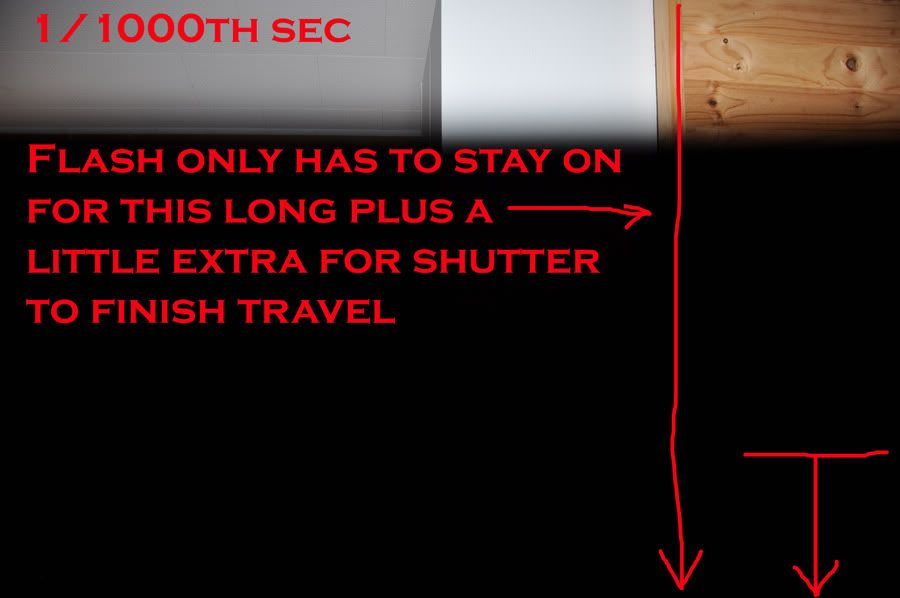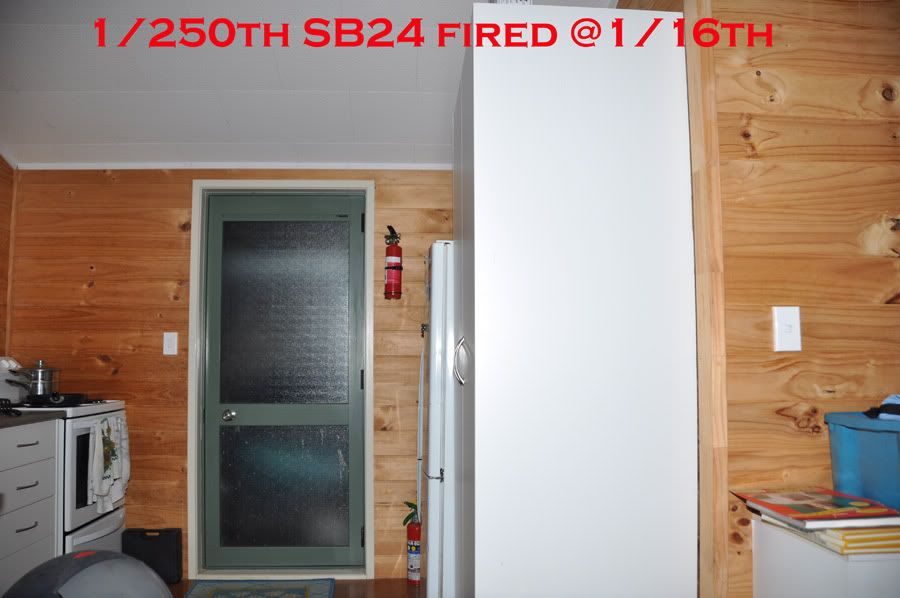This afternoon I did some tests to compare the power of auto-fp to normal flash . I used a solid white wall and kept the flash set at 1/1 full power and also made sure I kept the ambient level [which was very under-exposed ] the same , to simulate a situation where we would keep our ambient settings in the same place while reverting to auto-fp mode .
I aimed to get the same histogram in each shot and it was interesting how much difference a few cm made when I made adjustments .
This is what I aimed for :
After each change in settings I moved the camera until I got the same histogram and then measured the distance to the flash head so I could calculate the power difference compared to normal flash .
F25 1/200th normal flash 195cm
F22 1/250th auto-fp mode 68cm = 1/8th of normal flash power
F16 1/500th 88cm = 1/5
F11 1/1000th 120cm = 1/2.6
F8 1/2000th 136cm = 1/2
F6.3 1/3200th 120cm = 1/2.6
F5.6 1/4000th 112cm = 1/3
My conclusion is that due to the way auto-fp works even though the flash head suggests the same working distance at any of these settings when in auto-fp mode it appears that the combination at 1/2000th sec yields the greatest output , after which the curve drops off again .
Since auto-fp flash behaves as a continuous light the slower the speed the more energy it requires ! So faster shutter speeds mean that light is 'switched on' for shorter times , not counting the short period before the shutter opens and after it closes that it will need to be on . This should also result in faster charge times .
In other words , when you revert to auto-fp mode stay away from the the slower speeds and aim for 1/2000th sec and the aperture that gets you the results you want to get the most flash power possible in this mode .
.







 Thanks useful information:
Thanks useful information: 

 Reply With Quote
Reply With Quote Add To Bookmarks
Add To Bookmarks
 Threadstarter
Threadstarter










